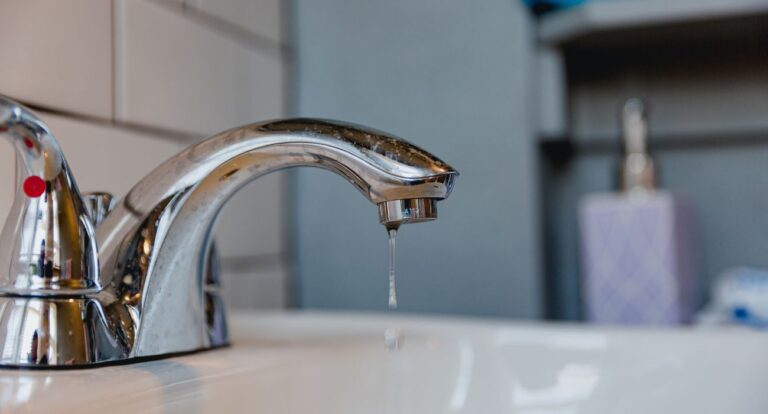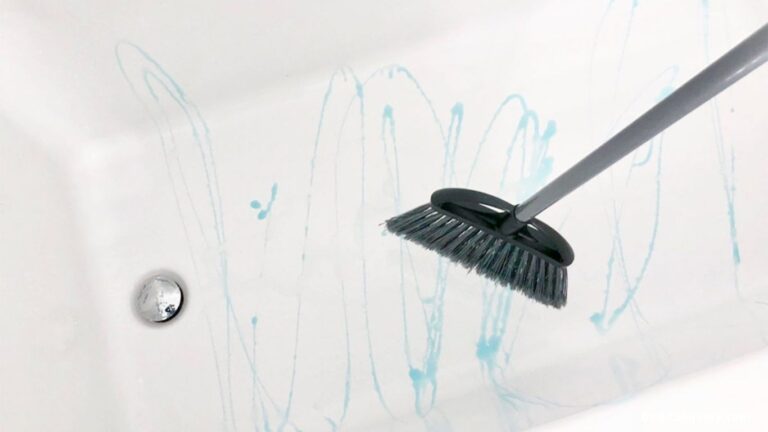How to Remove Rust from Your Enamel Tub? The Ultimate Guide
Tackling the stubborn rust in your enamel tub can seem like a daunting task. However, with the right knowledge, materials, and techniques, it is entirely doable. In this comprehensive guide, we’ll dive into the specifics of how to remove rust from your enamel tub and make it look as good as new again.
First, Understand The Rust Formation in Enamel Tubs
Rust forms when iron, oxygen, and water interact, leading to iron oxide’s creation—commonly known as rust. (Few other causes of rust stains can be found here.) In enamel tubs, small chips or cracks in the enamel can expose the iron-rich base material, leading to rust formation on bottom of bathtub. Knowing this, it becomes easier to understand how we can effectively combat this problem.
Materials You’ll Need
To start the rust removal process, gather these necessary items, or find out the best bathtub rust removers here.
- Commercial rust remover (meant for enamel surfaces)
- Baking soda
- White vinegar
- Soft sponge
- Toothbrush
- Soft cloth
- Protective gloves
Step-by-Step Guide to Removing Rust from an Enamel Tub
Step 1: Don Safety Gear
Don your gloves to protect your skin from potential irritants. The importance of safety can’t be overstated.
Step 2: Prepare Your Cleaning Solution
A simple homemade solution of 1 part white vinegar to 2 parts baking soda is typically very effective. The solution should form a paste-like consistency. If it’s too thin, add more baking soda; if too thick, add more vinegar.
Step 3: Apply the Solution to the Rust Stains
Using your soft cloth or sponge, apply the paste to the rust stains. Make sure the rusted areas are well covered.
Step 4: Let the Solution Do Its Work
Allow the cleaning solution to sit on the stains for at least 10-15 minutes. This time allows the solution to penetrate and loosen the rust.
Step 5: Scrub the Stains
With your non-abrasive scrub brush, gently scrub the rusted areas. Make sure to be careful to avoid scratching the enamel.
Step 6: Rinse and Dry
Rinse the tub thoroughly with warm water. Afterwards, dry it with a towel to prevent water spots and further rusting.
Step 7: Repeat if Necessary
If the rust stains persist, you may need to repeat the process. For stubborn stains, you might consider using lemon juice, which is naturally acidic, or a commercial rust remover. Be sure to follow the manufacturer’s instructions if you choose the latter.
| Step | Instructions |
|---|---|
| 1 | Don safety gear |
| 2 | Prepare your cleaning solution |
| 3 | Apply the solution to the rust stains |
| 4 | Let the solution sit for 10-15 minutes |
| 5 | Scrub the stains |
| 6 | Rinse and dry |
| 7 | Repeat if necessary |
Tips to Help You Avoid Rust Formation in Your Enamel Tub
In preserving the condition of your enamel tub, it’s essential to understand what triggers rust and how it can be prevented. A mix of moisture, oxygen, and iron elements can cause rust, but by employing the right techniques, you can protect your tub from this common issue. Here are some actionable steps:
- Regular Cleaning: Frequent cleaning is paramount to avoid rust. This process involves using a non-abrasive cleaner to gently remove dirt and impurities without scratching the tub’s surface. A mild dish soap or a specialized enamel cleaner will suffice.
- Timely Repairs: If you notice any chips or cracks, fix them promptly. These flaws can expose the iron base of your tub, leading to rust.
- Proper Drying: Ensure to dry off the tub after every use. Persistent moisture creates the perfect environment for rust to form.
- Use of Protective Products: There are numerous rust prevention sprays and wax on the market that form a protective layer on the tub’s surface, blocking moisture.
- Avoiding Abrasive Scrubbers: Metal scrubbers or harsh cleaners can strip off the enamel coating, paving the way for rust. Stick to soft cloth or sponges for cleaning.
- Regular Inspection: Keep an eye on any changes to the tub’s surface. Early detection can prevent a small rust spot from becoming a significant issue.
A Detailed Guide to Enamel Tub Maintenance
Regular Cleaning
To keep your tub looking its best, regular cleaning is essential. Make it a habit to clean your tub at least once a week using a gentle cleaner. Avoid harsh chemicals, as these can damage the enamel surface. Instead, opt for a homemade solution of baking soda and water or a mild dish soap. Here is a simple step-by-step guide to cleaning your enamel tub:
- Rinse the tub with warm water.
- Apply your cleaner evenly over the surface.
- Use a soft cloth or sponge to gently scrub the surface.
- Rinely thoroughly and dry with a soft towel.
Timely Repairs
If you notice any chips or cracks on your enamel tub, it’s crucial to repair them promptly. These damages can expose the underlying iron, leading to rust formation. While minor repairs can be done using a DIY enamel repair kit, significant damages may require professional help.
Proper Drying
After each use, make it a habit to dry your tub thoroughly. This practice eliminates any lingering moisture, preventing rust formation. Use a soft towel to wipe down the surface.
Use of Protective Products
There are numerous rust prevention products available on the market. These sprays or waxes create a protective layer on the tub’s surface, blocking any moisture. These products should be applied periodically, following the manufacturer’s instructions.
Avoiding Abrasive Scrubbers
Abrasive scrubbers can damage the enamel surface, making it more prone to rust. Instead, use a soft cloth or sponge for cleaning. If tough stains persist, consider using a non-abrasive cleaner or a homemade paste of baking soda and water.
Regular Inspection
Keeping a close eye on your tub’s condition can help detect any early signs of rust and feels like sandpaper. If you notice any orange or brown stains, take immediate action. Use a rust remover designed for enamel surfaces to treat these spots.
A Handy Maintenance Schedule
| Task | Frequency |
|---|---|
| Regular cleaning | Once a week |
| Surface drying | After each use |
| Application of protectants | Once a month |
| Tub inspection | Once a month |
| Repairing chips or cracks | As required |
Key Takeaways
- Rust in enamel tubs forms due to iron exposure to oxygen and water.
- Gather the appropriate materials for rust removal, including a commercial rust remover, baking soda, white vinegar, and soft cleaning tools.
- Follow a step-by-step guide to effectively remove rust from your enamel tub.
- Maintain a rust-free tub with regular cleaning and immediate repair of any chips or cracks.
Frequently Asked Questions
Why is rust forming in my enamel tub?
Rust forms when the iron in the base material of your tub is exposed to oxygen and water, usually due to chips or cracks in the enamel coating.
Can I use any rust remover on my enamel tub?
Always choose a rust remover that is safe for enamel surfaces to avoid damaging your tub.
How can I prevent rust formation in my tub?
Regular cleaning and immediate repair of chips or cracks in your tub’s enamel coating can help prevent rust formation.
Is it safe to use baking soda and vinegar on my enamel tub?
Yes, baking soda and vinegar are safe, mild cleaning agents that can help remove stubborn rust stains without damaging the enamel.
Can I remove rust stains using abrasive materials like steel wool?
No, abrasive materials can further damage the enamel, exposing more of the iron base and leading to more rust. Always use soft tools for rust removal.
Read more: Is A Peeling Bathtub Dangerous? What Homeowners Should Know

Amanda has been designing and installing bathtubs for over 15 years. She first got interested in the bathtub industry while working as an interior designer right after college. During her years as a designer, Amanda was frustrated by the lack of high-quality, unique bathtub options for her clients. This passion led her to start her own bathtub website in 2009.







